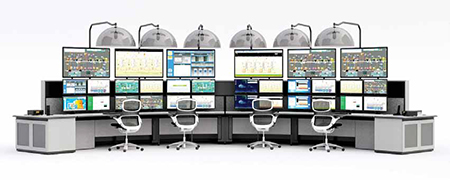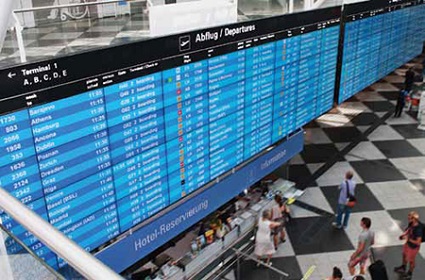David Chiappini Sees Matrox in Every AV Install

NAME: David Chiappini
COMPANY: Matrox Graphics
TITLE: Vice President of Research and Development
SCN: What is your position, and what does it entail? What are your responsibilities?
David Chiappini: I’m vice president of R&D at Matrox Graphics, overseeing hardware and software engineering, ASIC design and quality assurance. These teams are responsible for developing and perfecting a wide range of products. Chances are that all of your readers have used at least one of our products—whether they know it or not. Multidisplay products such as the Matrox TripleHead2Go have become standard AV industry tools, while others lead a more covert life—housed inside third-party video wall controllers, AV-over-IP encoders, fiber optic extenders, servers, and more.
SCN: How has your background prepared you for your current role?
DC: I’ve held almost every job there is at Matrox, including an internship fielding tech support calls while I was still in school. Strong in-house support has always been one of Matrox’s core values and we take a customer-centric approach to product development as well.
SCN: What are your short- and long-term goals?
DC: Matrox has always strived to deliver practical innovations. Back in the late ’80s, Matrox Graphics developed the world’s first Microsoft Windows accelerators, which increased PC usability and helped drive widespread adoption in all areas of enterprise, government, industrial, and even home computing. Several years later, Matrox led the market by inventing the first graphics processor capable of supporting multiple monitors, addressing a major productivity hurdle by expanding the amount of information that can be viewed at one time.
A daily selection of the top stories for AV integrators, resellers and consultants. Sign up below.

Matrox PowerDesk software was also a major breakthrough, allowing clients to easily customize their multi-display setups. That software has evolved over time and is still available with the latest Matrox graphics cards, including the new C-Series line announced in September. Matrox hardware has also expanded to include video wall capture and display boards, fiber-optic KVM extenders, and AV-over-IP encoders and decoders.
My goals are to continue this legacy with the development of new products that address real-world problems in AV capture, distribution, and display—whether the integrator is outfitting a video wall in a government control room or the local pub, distributing AV across multiple train platforms or to church overflow rooms, or extending KVM signals in process control environments or post-production studios.
SCN: What is the greatest challenge you face?
DC: Technology moves quickly and complexity is rising. Finding ways to make complex technology easier to use is a challenge facing all equipment manufacturers. Matrox is addressing this challenge by offering a choice of tools. We put a lot of engineering time into developing flexible control software that is easy to use for integrators “as is.” MuraControl software for Mura MPX-based video walls and PowerStream software for Maevex AV-over-IP are two good examples. We also provide API libraries and SDKs for customers who want to add value by developing custom software or who are looking for a way to easily integrate control over Matrox products within existing control systems.

SCN: Where do you see your market heading?
DC: Convergence is more than a buzzword. The move towards bringing audio, video, data, and control onto a common network infrastructure is happening now. Matrox is well positioned to address this trend with a diverse range of products including Maevex H.264 encoders and decoders—which won an SCN Installation Product Award at InfoComm this year.
SCN: What new initiatives are we likely to see from Matrox?
DC: There are some problems associated with convergence. Compression adds latency, so low-bandwidth AV-over-IP doesn’t work well for real-time applications. And increasing resolution and the number of channels can strain standard bandwidth limits. New initiatives will attempt to solve those problems. In the meantime, while some application areas will continue to require classic zero-latency distribution models, we expect to see innovative AV integrators employing a hybrid distribution model vs. an all-or-nothing approach. You will start to see Matrox products employed on both sides of the spectrum in these hybrid network models.
SCN: How can systems contractors better position themselves to profit from the products Matrox has to offer?
DC: We offer a broad spectrum of high quality products for professional applications that solve practical problems of AV capture, extension, distribution, and display. For systems contractors who aren’t familiar with our product lines, I would recommend starting by reading up on the different hardware solutions we have available. Many of our products are “plug and play” and don’t require much experience to spec in and install. Other systems contractors are already very comfortable with our form factors of technology.
Systems contractors that are looking for ways to increase consulting, programming, customization, and retro-fit revenues are strongly encouraged to explore our command-based API libraries, SDKs, source code samples, free sample applets, and other software tools. Regardless of the level of technical expertise, there are ways for systems contractors to offer practical solutions for their customers and our value-add can certainly help them win more project revenue.
